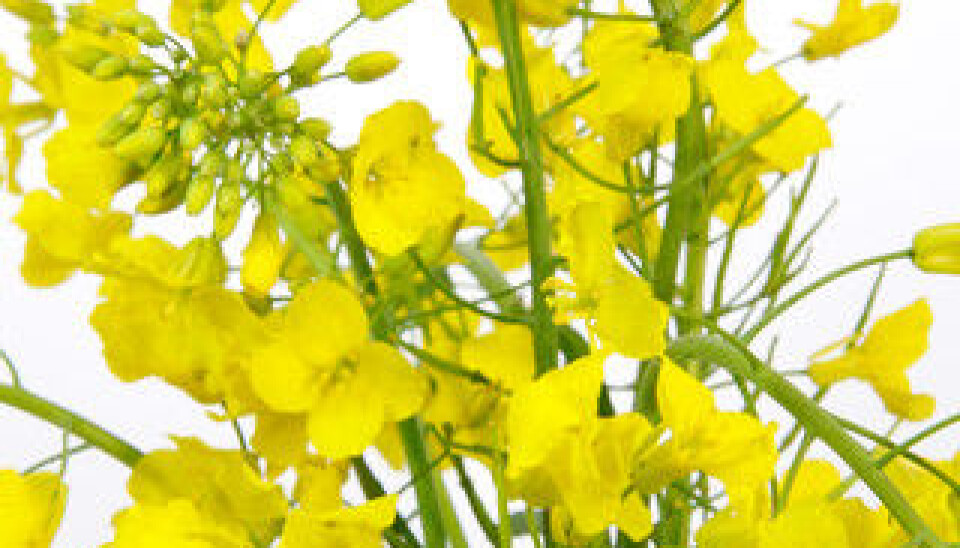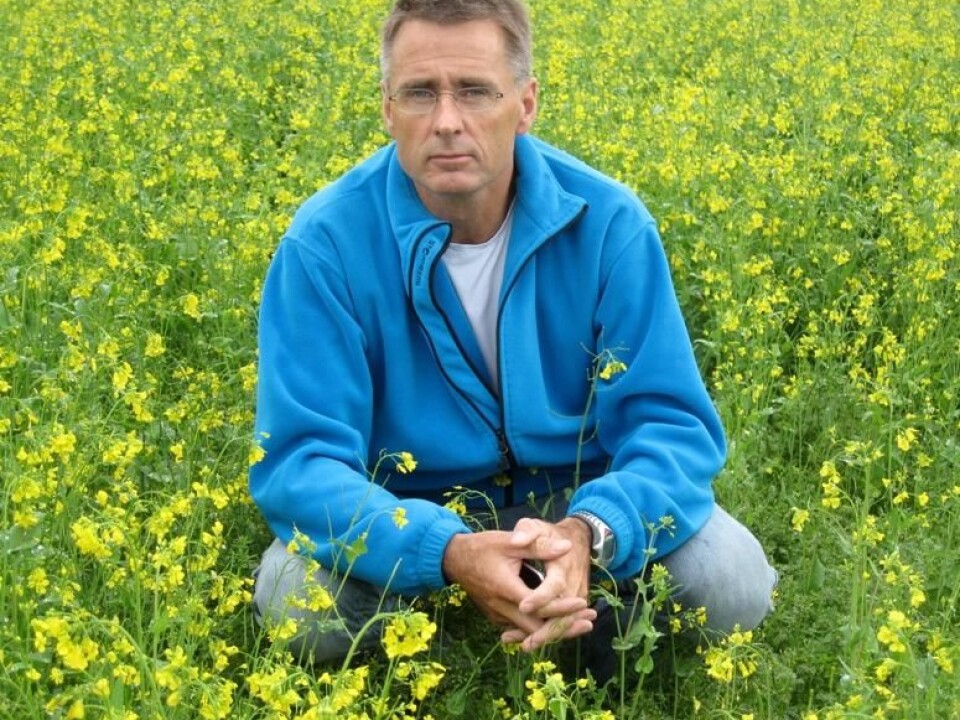An article from Norwegian SciTech News at NTNU

From poison to palatable
Every night millions of people go to bed hungry. New genetic technology can help us feed the world by making inedible seeds more edible.
Denne artikkelen er over ti år gammel og kan inneholde utdatert informasjon.
There are roughly about a quarter of a million plant species known on Earth. But we only eat between 5,000 and 10,000 of them. Many are poisonous to us – such as lily of the valley. And many plants have no human nutritional value – such as grass.
"In fact, there are no more than about 100 known species that can be used as important food crops," says Biology Professor Atle Bones at Norwegian University of Science and Technology.
But Bones and his research team have made a major discovery. They have figured out how a canola plant can be genetically programmed to reduce the toxic substances it produces in its seeds – thus making it more palatable.
Nobody has done this before, and Bones thinks it could be the beginning of a food revolution.

"The principle could be used with other plant species and plant parts," he says.
Tiny toxic bombs
Canola, or rape, is one of the fifteen most important crop plants in the world. It contains special cells that produce toxic substances. These "toxic bombs" are part of the plant's defence system and are activated in specific situations – such as when an insect begins feeding on a leaf. The substance that is released burns like hot mustard, causing animals and insects to move away.
"These 'toxic bombs' are good for the plant, but undesirable in animal feed and human food," says Bones.

When canola seeds are pressed, all the vegetable oil is removed. What is left is a protein-rich flour that can be used in food for animals and humans. But if the seeds pressed in the wrong way, the plant responds by releasing its toxic compounds. The oil is then flavoured with a taste of strong mustard, and the animals that eat the protein flour have stomach problems and troubles with nutrient uptake.
The NTNU research group has genetically reprogrammed canola cells so that the toxic bomb cells disappear on their own as the seed matures. But the toxin only fully disappears in the mature seeds.
This way, the plant can continue to protect itself, while the toxic compounds are removed from the part of the rapeseed used for food.
Thus, the proportion of rapeseed in the concentrate can be increased, and the seeds can be pressed without the risk of contaminating the oil with unwanted flavours and odours.
GMO production will double
There are almost 7 billion people on Earth. Every day, 25,000 people die of malnutrition – while 800 million are starving. By 2050 there will be more than 9 billion of us. As people become more prosperous, their per-person calorie consumption will grow. This combination of increased prosperity and population growth means that food production will have to double by 2050.
Globally, genetically modified food in production is already cultivated on +130 million hectares. But Bones believes that the production of genetically modified plants will more than double over the next ten years.
Today there are 25 countries that use genetically modified plants on a large scale. More than 50 per cent of the world's population lives in these countries.
Genetically modified soy already represents 75 per cent of all soybean production. And genetically modified plants are grown in an area that is 40 times the size of Denmark – mainly in the USA, Argentina, Brazil and China, according to Bones.
Genetically modified food is grown in seven European countries. There is already super broccoli that contains higher doses of the healthy substances in normal broccoli. Next year, producers will introduce soybeans enriched with omega-3 fatty acids.
From marijuana to food
Among the plants that could be genetically modified by removing their undesirable chemicals is cannabis.
Cannabis is a type of grass that thrives in subtropical and dry climates – and is best known as the raw material for hashish and marijuana.
But it is one of the world's fastest growing plants, and is exceptionally hardy. Its plant fibres can be used for rope and textiles, or as replacements for trees in the paper industry because they are stronger than wood fibre. The seeds can be used for oil.
"It would be interesting to use our new technology to produce cannabis that does not contain the psychoactive substance THC," says Bones.
Banned in Norway
It is illegal to grow genetically modified food in Norway, and in principle it may not be imported – not even for animal feed. But there are cracks in this virtual barrier, and small traces of genetically modified food are seeping in. Because Norway does not allow the sales of goods containing genetically modified contents, there is no provision for labelling this food on the grocery store shelves. But it's there.
The government has set 0.9 percent as the ceiling for how much genetically modified food may be in foods before they must be labelled. Each year, the Norwegian Food Safety Authority finds genetically modified canola, corn or rice in imported foods, which are promptly branded as illegal immigrants and kicked out of the country.
But the test sample size is small – last year only 131 samples were tested, of which 4 contained genetically modified food.
According to the Norwegian Board of Technology, it is difficult to keep Norway completely free of genetically modified ingredients, which is why the 0.9 per cent limit was set.
Everything is genetically modified
Atle Bones sees many benefits of genetically modified food.
"Genetically modified plants can be tailored to tolerate different climatic conditions such as drought or hard winters, and to have increased resistance to insects or fungus. These plants can thus be grown with fewer pesticides.
"This means that farmers are exposed to less pesticides, there are less pesticides in the ecosystem and probably less pesticides in food that is produced," Bones notes.
"There is nothing wrong or unethical about using genetically modified plants – because, in fact, all crops are modified. They have also been created from wild plants through comprehensive human-controlled breeding programmes and genetic selection," says Bones.
Must be thoroughly tested
It is no longer possible in the United States to distinguish between ordinary food and genetically modified food.
Some researchers describe the American situation as if people are playing Russian roulette with their health. Fear of allergies is one reason. Atle Bones believes that these kinds of worries over possible health effects are greatly exaggerated.
"It is obviously not possible to give an ironclad guarantee that no one will be allergic to a new gene in canola or corn. Neither is it possible to guarantee that no one is allergic to traditional modified plants. But this would normally be detected before the plants or the product goes into production.
"The method we have used, however, can remove known allergens, digestive inhibitory substances or toxins in the plant," said Bones.
He also believes that genetically modified plants must be assessed in each situation, and like conventionally modified plants, be tested thoroughly before they are approved for production.
"With our new technology, it is possible to target changes in specific parts of the plant. It is therefore possible to change a strawberry plant without any change in the berry to be eaten. And that is a scientific breakthrough," Bones concludes.






























